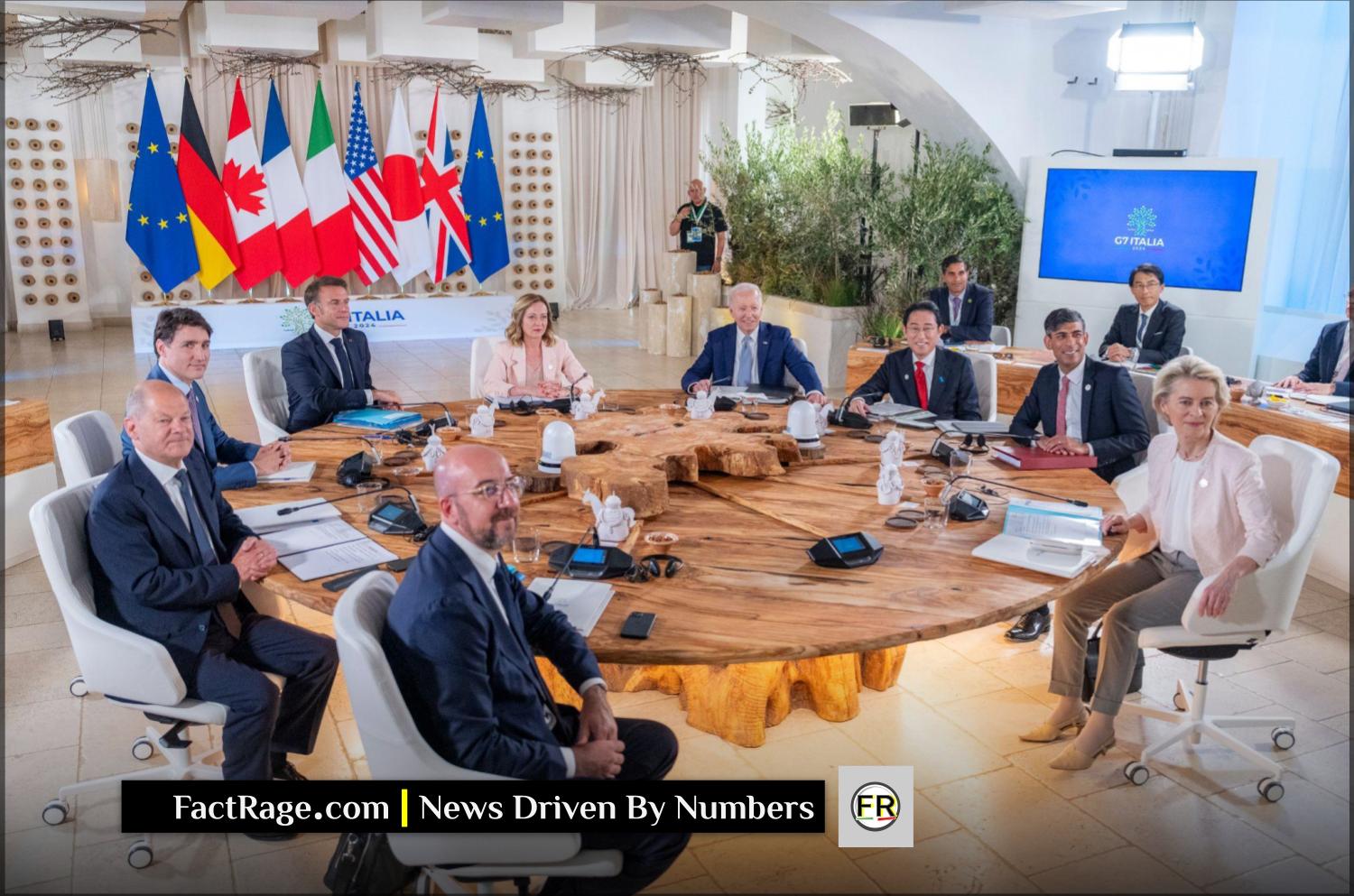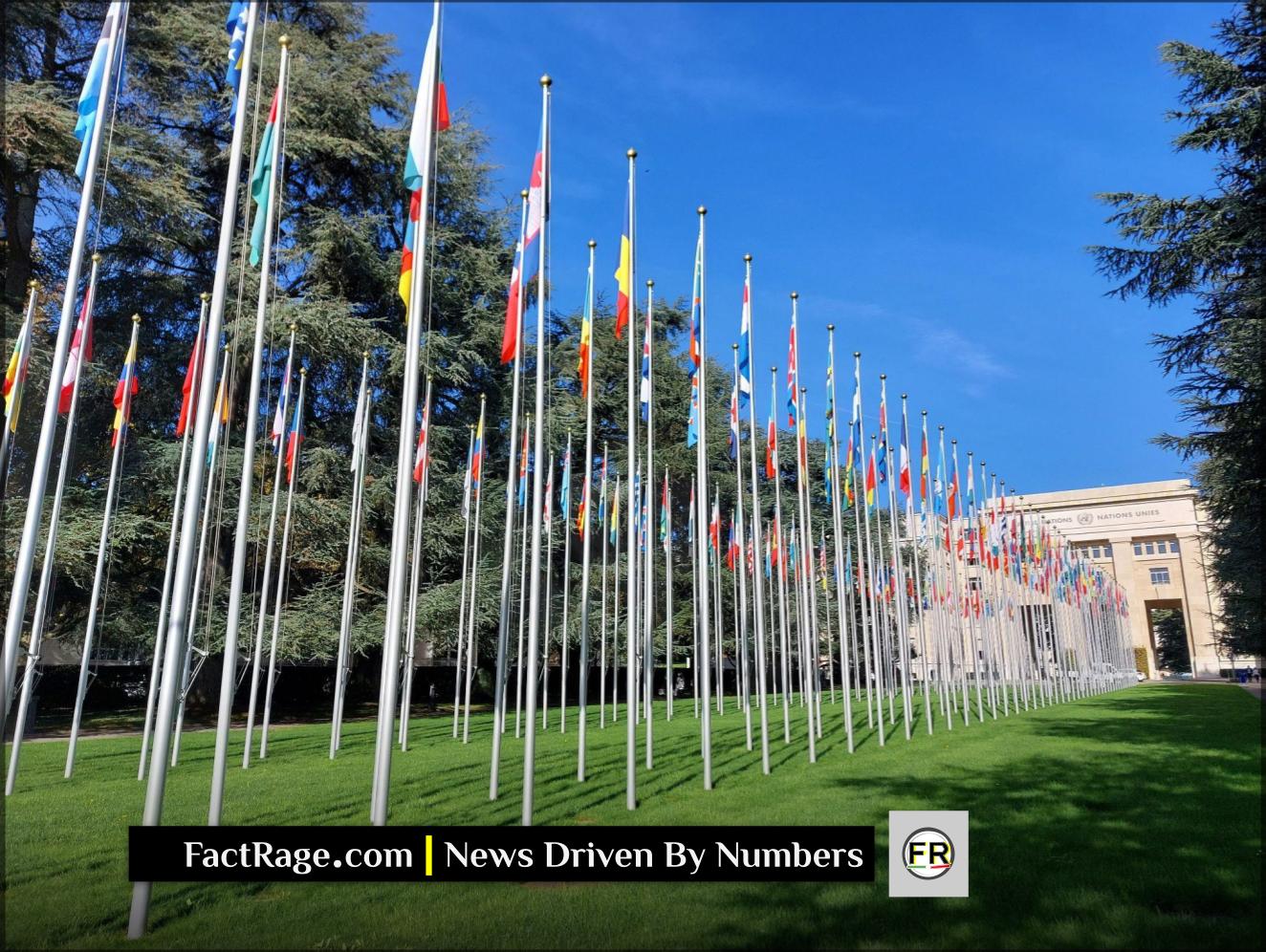G7 Summit 2025: 7 Things You Need to Know About the Kananaskis Meeting
KANANASKIS, ALBERTA – Leaders from the world’s most advanced economies will gather in Kananaskis, Alberta, from June 15-17, 2025, for the 51st G7 Summit.
Key Facts
- Expanded Participation – The G7’s core members are Canada, France, Germany, Italy, Japan, the UK, and the US, but the 2025 summit includes leaders from nine other nations and the EU.
- Informal by Design – The group operates without a formal charter or permanent staff, a structure intended to allow for frank discussion and rapid responses to global crises.
- Significant Economic Clout – Despite representing about 10% of the global population, G7 nations account for nearly 30% of the world’s total economic output.
This influential gathering has a unique history and structure that shapes its impact on global affairs. Here are seven key facts to understand the G7’s role ahead of the 2025 meeting.
7 Essential Facts About the G7 Summit 2025
With the 51st G7 Summit taking place June 15-17, 2025, in Kananaskis, Alberta, here are seven key facts to know about this influential gathering of world leaders.
1. The G7 Has an Extended Guest List Beyond Its Core Members

While the G7 consists of seven core member nations (Canada, France, Germany, Italy, Japan, the United Kingdom, and the United States), each summit includes additional participants. The European Union has permanent representation at every summit, with both the European Council President and European Commission President attending.
For the 2025 summit, Canada has strategically invited leaders from key emerging economies and regional powers. The invited nations include Australia, Brazil, India, Mexico, Saudi Arabia, South Korea, South Africa, Ukraine, and the United Arab Emirates. This expanded guest list reflects the G7’s recognition that global challenges require broader international cooperation beyond traditional Western allies.
2. The Summits Follow a Predictable Annual Rotation
The G7 presidency rotates annually among member countries in a fixed order: France, United States, United Kingdom, Germany, Japan, Italy, and Canada. The European Union is not part of the rotation, maintaining its permanent observer status instead. This systematic rotation ensures each member nation gets the opportunity to set the agenda and host discussions on their priority issues approximately every seven years.
The host country’s role extends far beyond simply providing a venue. The presidency allows the host nation to shape the summit’s focus, invite additional participants, and drive specific policy initiatives that align with their foreign policy objectives.
3. The G7 Operates More Informally Than Larger International Bodies
Unlike the G20 or United Nations, the G7 deliberately maintains a smaller, more intimate format that allows for frank discussions among like-minded democracies. The group has no formal charter, permanent secretariat, or binding treaties. This informality is considered one of its greatest strengths, enabling rapid consensus-building and flexible responses to emerging global crises.
The absence of formal bureaucratic structures means the G7 can pivot quickly to address urgent issues, from financial crises to security threats, without being bogged down by procedural constraints that often hamper larger international organizations.
4. ‘Sherpas’ Do the Heavy Lifting Behind the Scenes

The term “Sherpa” in G7 parlance refers to the high-level diplomats and policy advisors who do the preparatory work for the annual leaders’ summit. Just as Sherpas guide mountaineers to the summit, these diplomatic professionals meet throughout the year to negotiate and draft agreements on the issues to be discussed.
Sherpas are typically senior foreign policy officials who work closely with their respective leaders. They conduct multiple rounds of negotiations, identify areas of consensus, and prepare detailed briefing materials to ensure that when the leaders meet, they can have productive conversations and reach meaningful agreements within the limited timeframe of the summit.
5. BRICS Serves as the G7’s Alternative Counterpart
The BRICS group (Brazil, Russia, India, China, and South Africa) emerged as an alternative forum for major emerging economies that felt underrepresented in Western-dominated institutions like the G7. While the G7 represents established democratic market economies, BRICS brings together major developing nations that often have different perspectives on global governance and economic policy.
The relationship between G7 and BRICS is complex, with some nations like India and Brazil participating in both forums. This dual participation reflects the multipolar nature of modern international relations, where countries seek to maximize their influence through multiple diplomatic channels rather than aligning exclusively with one bloc.
6. The Group Has Evolved From G6 to G7 to G8 and Back
The organization began as the G6 in 1975, consisting of France, Germany, Italy, Japan, the United Kingdom, and the United States, formed in response to the 1970s oil crisis and economic turbulence. Canada joined in 1976, creating the G7. Russia was added in 1997, forming the G8, as part of the post-Cold War effort to integrate Russia into Western institutions.
However, Russia’s membership was suspended in 2014 following its annexation of Crimea, and the group reverted to the G7 format. This evolution demonstrates how the group’s composition reflects broader geopolitical realities and shared democratic values rather than purely economic criteria.
7. The G7 Represents Nearly One-Third of Global Economic Output

Despite representing only about 10% of the world’s population, the G7 nations account for approximately 29% of global economic output. This economic weight gives the group significant influence over international financial markets, trade policies, and global economic governance.
The 2025 summit marks the 50th anniversary of the G7, highlighting five decades of economic cooperation among the world’s leading industrialized democracies. While emerging economies have grown rapidly, the G7 nations continue to play outsized roles in global finance, technology innovation, and development assistance, making their collective decisions highly consequential for the world economy.
The 51st G7 Summit will take place June 15-17, 2025, in Kananaskis, Alberta, the same location that hosted the G8 summit in 2002.



